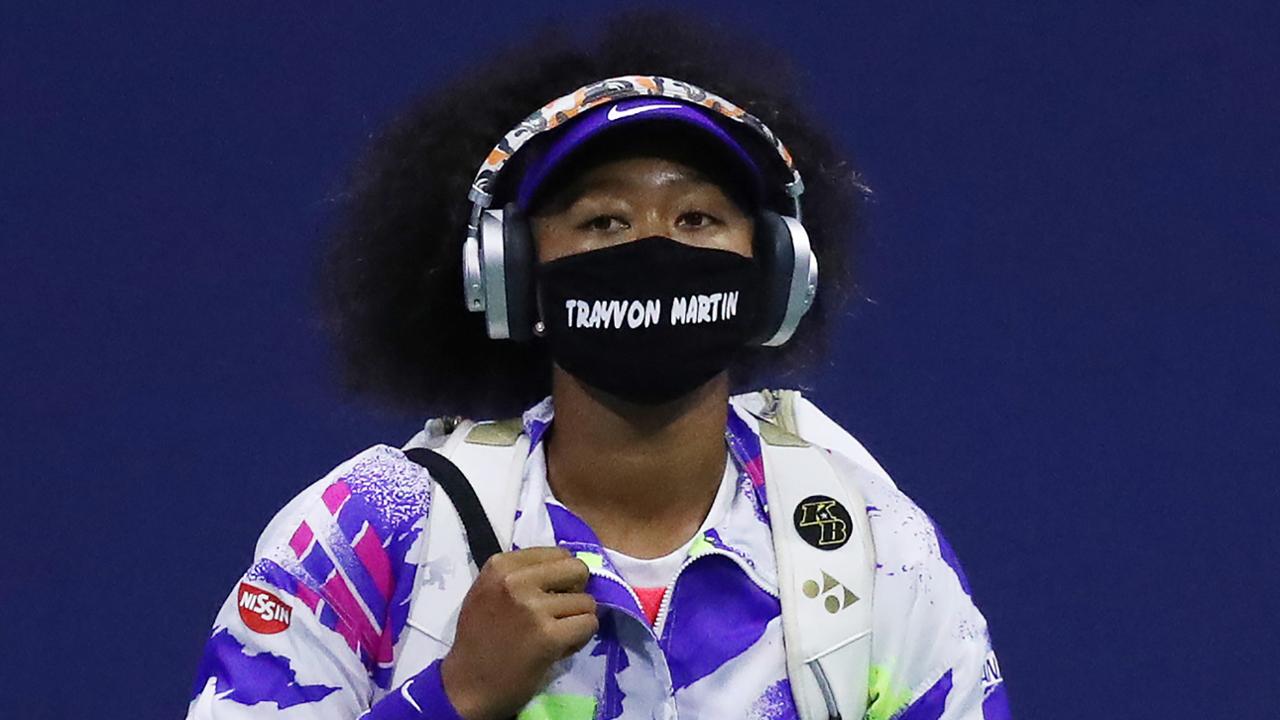Naomi Osaka has been dominant in this year’s US Open. She not only won the championship but triggered her support for the fight against racial injustice by wearing masks with names of Black Americans. With her focus on racial injustice, Osaka joined a community of sports protesters whose history goes back a long way.
Naomi Osaka’s Masks
Round One- Breonna Taylor
Round Two- Elijah McClain
Round Three- Ahmaud Arbery
Round Four- Trayvon Martin
Quarterfinal- George Floyd
Semifinal- Philando Castile
Final- Tamir Rice
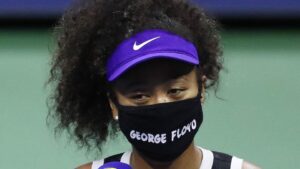 US Open champion Naomi Osaka wore a different face mask carrying the name of a Black American for each of her matches at Flushing Meadows this year. Born to Haitian father and Japanese mother, Osaka represents Japan. But as she stays in Los Angeles, she chose US Open as a platform to highlight racial injustice in the United States to the global audience. Naomi Osaka’s participation in Black Lives Matter movement included her in the long lists of eminent sporting personalities who took stands on sporting fields to protest against injustice.
US Open champion Naomi Osaka wore a different face mask carrying the name of a Black American for each of her matches at Flushing Meadows this year. Born to Haitian father and Japanese mother, Osaka represents Japan. But as she stays in Los Angeles, she chose US Open as a platform to highlight racial injustice in the United States to the global audience. Naomi Osaka’s participation in Black Lives Matter movement included her in the long lists of eminent sporting personalities who took stands on sporting fields to protest against injustice.
When Charlie Morton defended Moses Walker in 1883

Moses Fleetwood Walker who is credited with being one of the first African-American men to play in Major Baseball League (MBL), faced criticism when he entered professional baseball. On August 10 1883, in an exhibition match between Toledo Blue Stockings and Chicago White Stockings, Chicago’s manager Cap Anson demanded that the Blue Stockings not play Walker. After knowing Anson’s demand, Toledo manager Charlie Morton took a stand by starting Walker at right field. Anson infamously said “We’ll play this here game, but won’t play never no more with the nigger in”.
When Peter O’ Connor’s flag wave at 1906 Athens Olympics became symbolic
In 1906, Irish triple jumper Peter O’Connor went to Athens believing that he was representing Ireland. He later knew that there would be no Irish team because of a sudden change of rule. O’ Connor was determined to raise Ireland’s flag at the Olympics and so after winning silver medal he scaled a flagpole in the middle of the field to wave the Irish flag, while the pole was guarded by another Irish athlete Con Leahy.
When Jesse Owens led African Americans to shatter the beliefs of Adolf Hitler
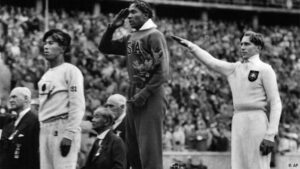
In 1936 Berlin Games, Jesse Owens dashed Hitler’s myth of a resurgent Nazi Germany where he hoped that German athletes would dominate the Olympic Games. Nazi minister Albert Speer wrote that Hitler ‘was highly annoyed by the series of triumphs by the marvelous coloured American runner, Jesse Owens’. Owens won four gold medals, a record which was not equalled until Carl Lewis won gold medals in the same events at the 1984 Olympics. Owens’ achievement, subsequently, motivated the other 18 African-Americans in the US squad of whom 14 earned medals at Berlin. Hitler failed to acknowledge Owens and the other African- Americans by simply accusing them of having a stronger physique than those of civilized whites and hence suggested to exclude them from future Games.
When Althea Gibson broke all barriers
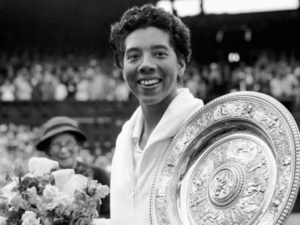
In 1950, United States Lawn Tennis Association took a historic decision by allowing an African-American to play in the US Open. The player was none other than Althea Gibson, the two-time winner of the national black women’s tennis championship and as an elite-level player during that time. Despite her growing reputation, she was not allowed to play in the US Open- the premier American tournament. Nevertheless, retired champion Alice Marble wrote a long letter in the magazine ‘American Lawn Tennis’- “Ms Gibson is not being judged by the yardstick of ability, but by the fact that her pigmentation is somewhat different. She is a fellow tennis player, and, as such, deserving of the chance to prove herself.” In response to this letter, United States Lawn Tennis Association opened the door for her and thus Althea Gibson became the first Black player to receive an invitation to the US Open. Gibson went on to win seven Grand Slam singles titles- one French Open, two Wimbledon and two US Open.
In 1968, when Arthur Ashe became the first African-American man to win a Grand Slam singles title, Billie Jean King said, “If it hadn’t been for Althea, it wouldn’t have been so easy for Arthur, or the ones who followed.”
In a column in New York Times about the historical analysis of women in sports, journalist William C Rhoden wrote-“Althea Gibson and Wilma Rudolph are, without question, the most significant athletic forces among Black women in sports history……Althea’s accomplishments were more revolutionary because of the psycho-social impact on Black America. Even to those Blacks who hadn’t the slightest idea of where or what Wimbledon was, her victory……proved again that Blacks, when given an opportunity, could compete at any level in American society.”
When Muhammad Ali refused to serve the US army in Vietnam
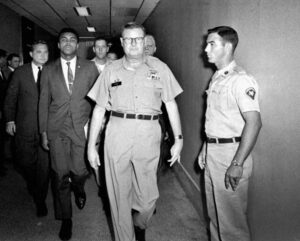
In 1967, Muhammad Ali was drafted into the U.S. military to serve the nation in Vietnam. But the famous boxer thought that the war in Vietnam was a type of genocide. He announced, “Why should they ask me to put on a uniform and go 10,000 miles from home and drop bombs and bullets on Brown people in Vietnam?” He further refused to step forward at an induction ceremony in Houston. On June 4th 1967, some prominent black athletes met in Cleveland to showsupport for Muhammad Ali. However, Ali could not save his imprisonment as few weeks later he was convicted of draft evasion, sentenced to five years in prison and stripped of his heavyweight title.
When the greatest event saw the Black Power Salute
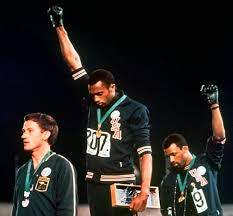
It was on October 16th 1968 that one of the most blatant protests against racial discrimination happened at an Olympic platform. US athlete Tommie Smith won the 200 m race and John Carlos finished in third place. After the race was completed, they went to the podium but the two US athletes received their medals shoeless only wearing black socks. Smith wore a black scarf around his neck with badges of Olympic Project for Human Rights. As Carlos forgot his black gloves in the Olympic Village, he wore Smith’s left-handed glove. For this reason, Carlos raised his left hand as opposed to his right. Later Smith said, “If I win, I am American, not a black American. But if I did something bad, then they would say I am a Negro. We are black and we are proud of being black. Black America will understand what we did tonight.”
When Arthur Ashe dared to visit South Africa during apartheid
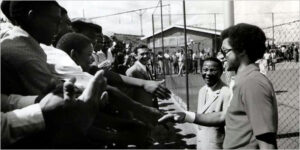
South Africa was boycotted by the international sports community for several years due to its apartheid policy. But Arthur Ashe, regarded as one of the greatest American-African sportsmen, decided to travel there and play in that country’s national tennis tournament. In November 1973 he reached South Africa with the belief that the sight of a free black man competing with whites, and beating them, would offer hope. Ashe was crowd’s favourite as the ‘nonwhites’ were ecstatic to see a free black man. In the final, Ashe demanded to integrate the normally segregated seating. It did not happen and therefore, the Whites watched him from up close while the non-whites from afar. But their cheering was so loud that often he had to make them quiet and not request them not to cheer the errors of his opponents.
When Feyisa Lilesa crossed his arms and went in exile
The Ethiopian runner, Feyisa Lilesa, finished second in the marathon at the Rio de Janeiro Olympic Games. Immediately after crossing the line, he crossed his arms above his head to protest the treatment of the Oromo people by his country’s government. In response he was sent to exile. But recently he has been brought back by the country’s new Prime Minister.

